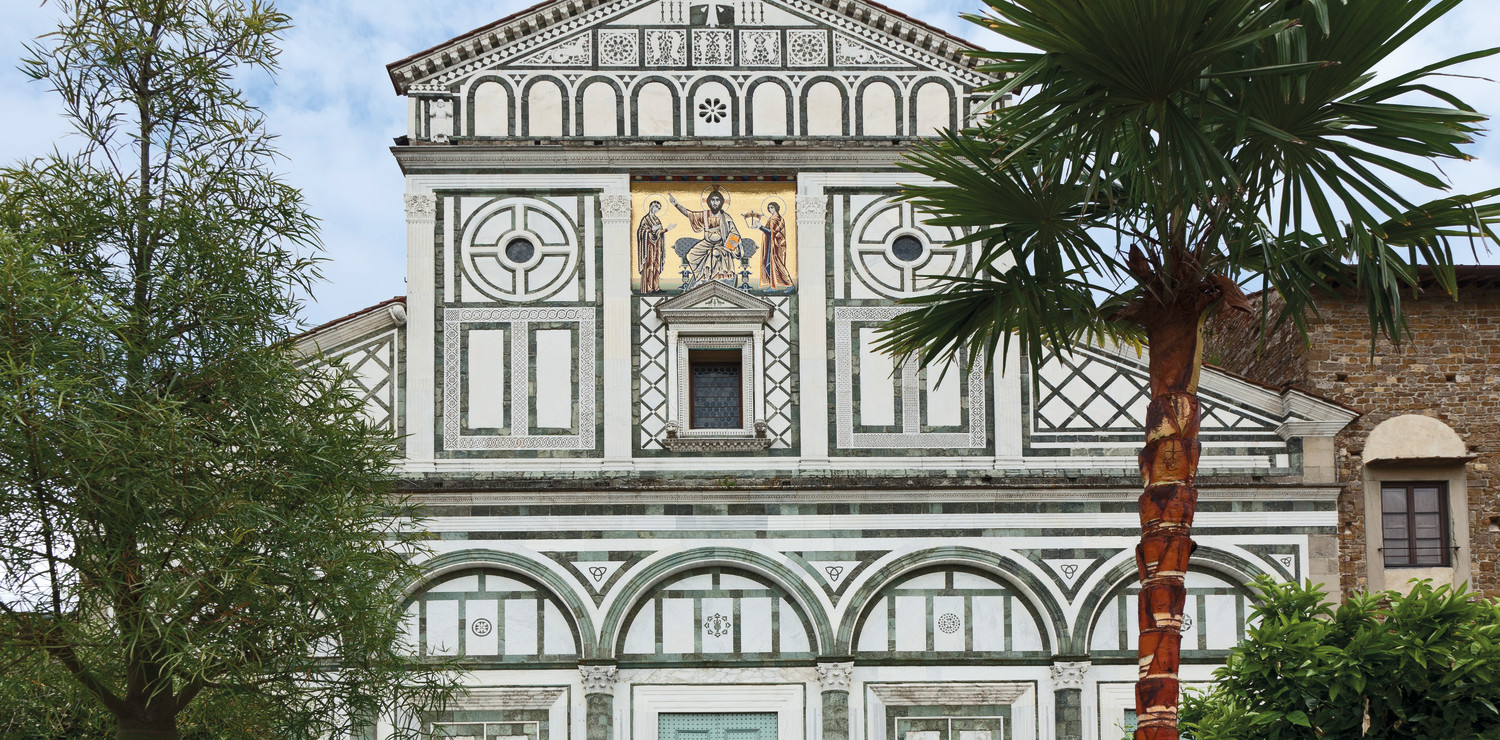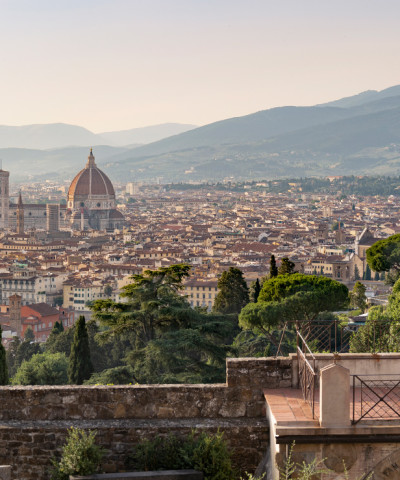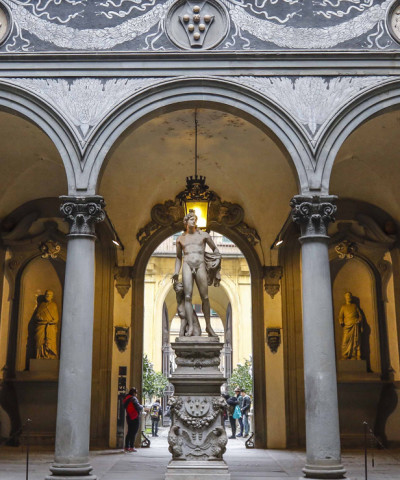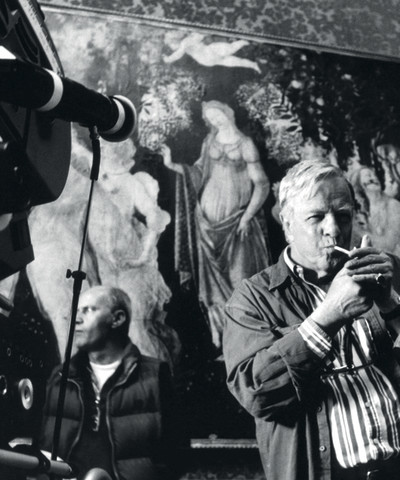The Basilica of San Miniato al Monte
The oldest church in Florence, now a Unesco World Heritage Site, narrated by Abbot Bernardo Gianni
Situated one hundred metres above the river Arno, the Basilica of San Miniato al Monte, a gem of Tuscan Romanesque architecture, has been contemplating and protecting Florence for ten centuries. As to the people of Florence, they return his beneficial presence with unfailing affection: no one, even when bustling along the banks of the Arno or the streets skirting the city centre can help casting a fond gaze at the sublime facade which emanates peacefulness, harmony and equilibrium.
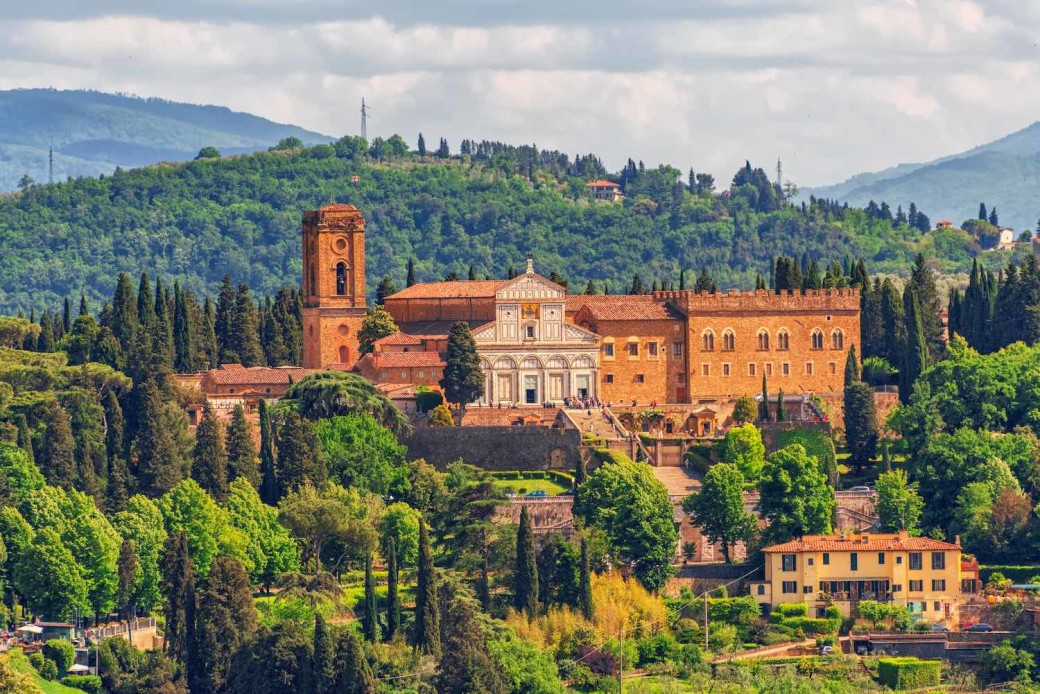 san miniato firenze
san miniato firenze“But the vocation of so much beauty is universal” explains dom Bernardo Gianni, the Benedictine abbot and prior of San Miniato who, when presenting the Millennial anniversary (27 April 2018-27 April 2019), described it as “a terrace symbolically extended towards all Nations”.
 San Miniato al Monte ph. Pierpaolo Pagano1
San Miniato al Monte ph. Pierpaolo Pagano1If you have a mental image of a bent and wrinkled old abbot looking like a character straight out of The Name of the Rose, think again: dom Bernardo is very young for the important position he occupies, but he is already an eminence in the spiritual and cultural sphere, well beyond the ambit of the Church and the borders of Florence.
On what grounds does this universal nature rest, dom Bernardo?
They are closely associated with its foundation. In a document dating back to 27 April 1018, Bishop Hildebrand recounted that he had found the relics of Saint Minias, an Armenian saint who was beheaded in 250 A.D., under an ancient Carolingian Basilica (therefore founded by Charlemagne in the VIII century), and that, with the intention of rebuilding it, he had invoked the help of Henry II of Bavaria. He built it and placed it under the guidance of an abbot named Drogo, while also founding a monastic community. This sequence of interchanges – the involvement of an Italian bishop, the Frankish and then the German authorities, for the sake of an Armenian saint – reveals the European vocation of this place and, in some ways, explains why San Miniato is loved by everyone, whether they are believers or non-believers, from Florence or elsewhere. If we think about it, with this quality of universality, San Miniato anticipated the role Florence was destined to have in the centuries to follow and even today, which was impossible to imagine in the year one thousand.
If they still exist, what traces can be seen of the original Carolingian Basilica?
The Porta Santa, the first door you see on entering. The wording “Haec est porta coeli” is engraved on the marble of its threshold, which means “This is heaven’s gate”. This spot corresponds to the ancient burial place of Minias. It is the most important area of the present-day church. But apart from the historical aspect, its meaning is what counts: San Miniato al Monte opens the gates of heaven, which belongs to everyone, and therefore indicates a space of freedom, eternity and universality which everyone, believers and non-believers alike, recognize as being the special quality of this place.
 Porta del Cielo San Minato Al Monte ph Pierpaolo Pagano
Porta del Cielo San Minato Al Monte ph Pierpaolo PaganoThis millenary Church contains many symbols which are obscure for many of us today. Can you tell us about some of the most interesting ones?
An important feature is the triple spatial division: on entering we have the ground floor, which represents life, the underground crypt which symbolizes death and, finally, the third level which represents eternal life, the Heavenly Jerusalem. Pilgrims are invited to experience these three levels as a sort of existential journey to reach their destination, Christ, alpha and omega, of the apsidal basin.
 San MIniato al Monte, dettaglio della facciata ph Pierpaolo Pagano
San MIniato al Monte, dettaglio della facciata ph Pierpaolo PaganoEven the repetitive geometric designs on the facade and inside the Church have a meaning, don’t they?
The emphasis on geometric forms facilitates the perception of these places as spaces in which people can find the right gauge for exploring Creation. Geometry, which is beauty, reflects the creative intelligence of God.
Anyone planning a trip to Florence in the coming months should remember to spare a couple of hours for a visit to this place of incomparable beauty. The most enchanting time to do so is at 7.15 or 18.30, when the monks’ Gregorian chant resounds in the church.






